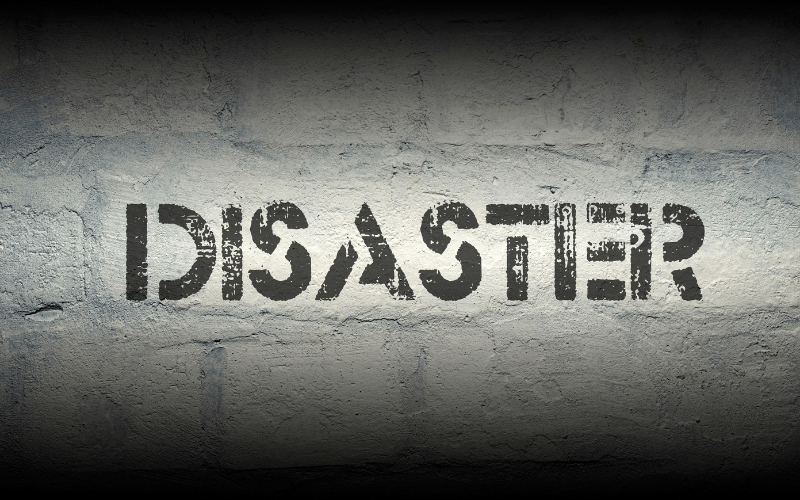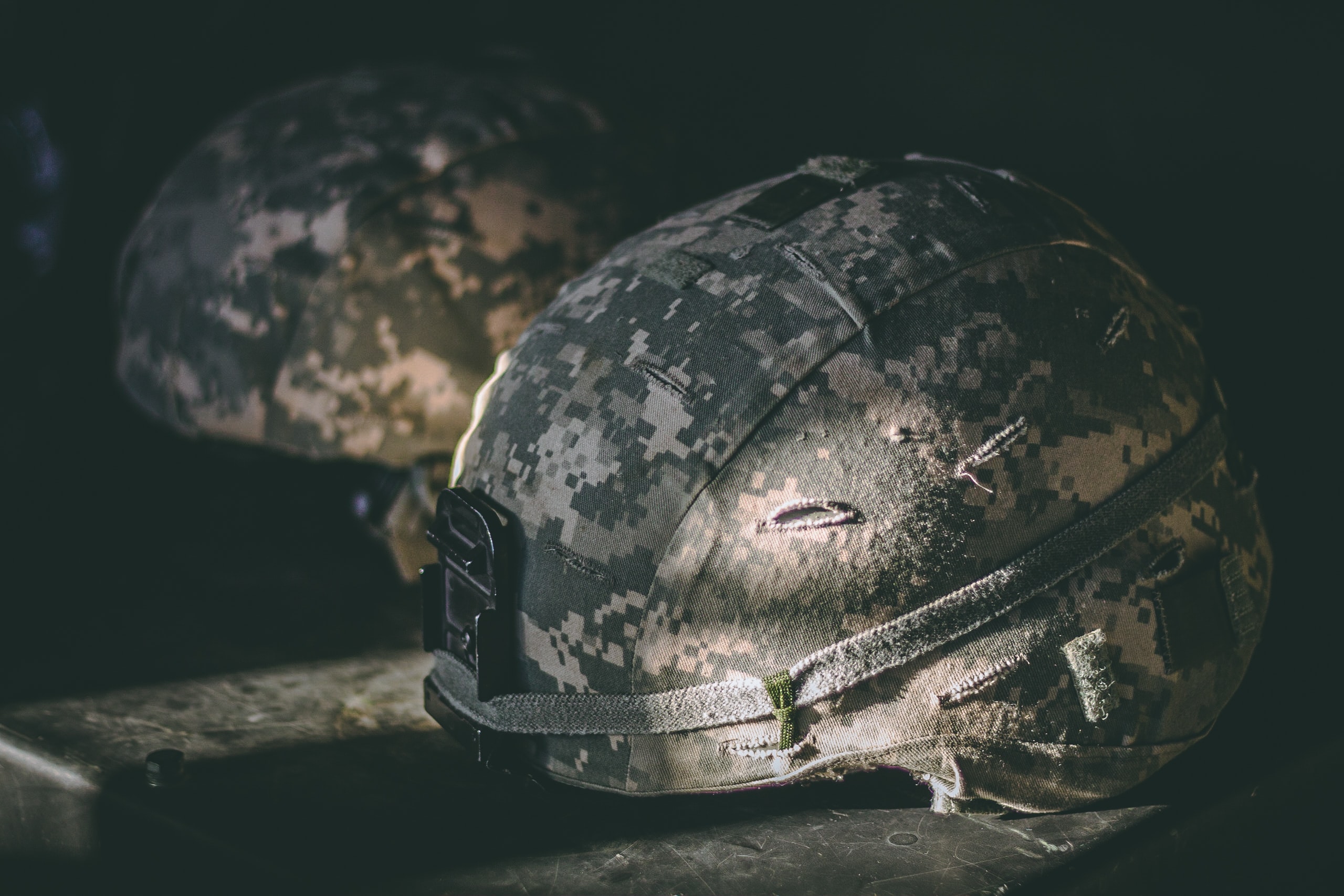EMDR therapy is often used in disaster response settings all over the world. Early EMDR Interventions and Group EMDR interventions have made a difference in the wake of many devastating disaster events such as earthquakes, shootings, fires and other personally or politically violent situations. Read more about the history and types of Early EMDR Interventions and Group EMDR Interventions here.
We turned to EMDRIA Members Catherine Butler, Ed.D., LMFT; Sharon Steckler, MSW, LCSW; and Eva Usadi, MA, BCD, CGP for more information on EMDR therapy in disaster response settings.
Using EMDR Therapy in Disaster Response
Guest Blog Post by Catherine Butler, Ed.D., LMFT; Sharon Steckler, MSW, LCSW; and Eva Usadi, MA, BCD, CGP
Tell us a little about you, your experience becoming an EMDR therapist, and your journey to using EMDR in disaster response settings.
 Catherine Butler, Ed.D., LMFT became an EMDR therapist after being frightened by a client’s husband in 2006. A colleague offered her an EMDR session to help clear the fear and she became trained at the next available opportunity. Originally her practice was set up for children and the military but watching her son become a firefighter/paramedic, she realized how first responders are affected by their jobs and the trauma they see. Her private practice is now 85 percent dedicated to them. Butler volunteered as a disaster mental health provider for the American Red Cross and started her response career with Hurricanes Katrina and Rita, followed by the significant wildfires in San Diego County. As a co-coordinator for the San Diego Trauma Recovery Network (TRN), she facilitated EMDR services for local medical providers and others during COVID-19 and remains dedicated to training community organizations about trauma and the benefits of EMDR.
Catherine Butler, Ed.D., LMFT became an EMDR therapist after being frightened by a client’s husband in 2006. A colleague offered her an EMDR session to help clear the fear and she became trained at the next available opportunity. Originally her practice was set up for children and the military but watching her son become a firefighter/paramedic, she realized how first responders are affected by their jobs and the trauma they see. Her private practice is now 85 percent dedicated to them. Butler volunteered as a disaster mental health provider for the American Red Cross and started her response career with Hurricanes Katrina and Rita, followed by the significant wildfires in San Diego County. As a co-coordinator for the San Diego Trauma Recovery Network (TRN), she facilitated EMDR services for local medical providers and others during COVID-19 and remains dedicated to training community organizations about trauma and the benefits of EMDR.
 Sharon Steckler, MSW, LCSW became an EMDR therapist while working at the University of Illinois College of Medicine’s HIV clinic in Englewood, a low-resourced, high-risk Chicago south side neighborhood. While there she encountered a large number of patients with complex PTSD. Many of these patients were re-entering the community from incarceration. Steckler was desperate for a way to provide fast stabilization and help her patients heal without years of talk therapy. Many patients were insecurely housed and did not stay in treatment long. She also learned that depression is one of the leading causes of nonadherence to HIV medication which can lead to transmission of the virus. Patients liked EMDR as it did not require a lot of talking and the results were remarkable. Sharon also volunteered as a disaster mental health worker for the Red Cross where she spent 4 weeks responding to survivors of Hurricane Katrina. That experience, and wanting to help victims of gun violence in Chicago, many of whom have barriers accessing healthcare, inspired Sharon to become a coordinator for the Greater Chicago Trauma Recovery Network (TRN). Since that time Steckler and other members of the TRN have also provided EMDR to healthcare responders during the COVID Pandemic and more recently to victims of the Highland Park shooting.
Sharon Steckler, MSW, LCSW became an EMDR therapist while working at the University of Illinois College of Medicine’s HIV clinic in Englewood, a low-resourced, high-risk Chicago south side neighborhood. While there she encountered a large number of patients with complex PTSD. Many of these patients were re-entering the community from incarceration. Steckler was desperate for a way to provide fast stabilization and help her patients heal without years of talk therapy. Many patients were insecurely housed and did not stay in treatment long. She also learned that depression is one of the leading causes of nonadherence to HIV medication which can lead to transmission of the virus. Patients liked EMDR as it did not require a lot of talking and the results were remarkable. Sharon also volunteered as a disaster mental health worker for the Red Cross where she spent 4 weeks responding to survivors of Hurricane Katrina. That experience, and wanting to help victims of gun violence in Chicago, many of whom have barriers accessing healthcare, inspired Sharon to become a coordinator for the Greater Chicago Trauma Recovery Network (TRN). Since that time Steckler and other members of the TRN have also provided EMDR to healthcare responders during the COVID Pandemic and more recently to victims of the Highland Park shooting.
 Eva J. Usadi, MA, BCD, CGP became an EMDR therapist after working with a clinician who was already trained, based on his recommendation. Both were volunteers with the Red Cross Disaster Mental Health Team and had been deployed to Ground Zero after the events of September 11, 2001. In private practice for many years already, she recognized the lack of preparedness for a disaster of this magnitude, especially as it occurred in the city in which she was born, lived, and worked. The work she did at Ground Zero with members of FDNY, NYPD, PAPD (Port Authority Police Department), U.S. Secret Service, FBI, FEMA, and the NYNG set her on a path of commitment to working with uniformed first responders, those who serve domestically, and abroad. This also led to work with military members and veterans. She was one of a small handful of mental health volunteers who were part of the medical team at the Standing Rock Dakota pipeline protest in December 2016, when over 4,000 military veterans arrived at the camp to support the Lakota Sioux tribe in their effort to protect water rights. Over the next 20 years, she received Certification in EMDR and is now an EMDRIA Approved Consultant. When the Covid-19 pandemic hit in March 2020, she volunteered to be the clinical consultant to the NYC Trauma Recovery Network (TRN) which grew from 18 members pre-pandemic to 100 members, receiving a TRN award in 2022 for this work.
Eva J. Usadi, MA, BCD, CGP became an EMDR therapist after working with a clinician who was already trained, based on his recommendation. Both were volunteers with the Red Cross Disaster Mental Health Team and had been deployed to Ground Zero after the events of September 11, 2001. In private practice for many years already, she recognized the lack of preparedness for a disaster of this magnitude, especially as it occurred in the city in which she was born, lived, and worked. The work she did at Ground Zero with members of FDNY, NYPD, PAPD (Port Authority Police Department), U.S. Secret Service, FBI, FEMA, and the NYNG set her on a path of commitment to working with uniformed first responders, those who serve domestically, and abroad. This also led to work with military members and veterans. She was one of a small handful of mental health volunteers who were part of the medical team at the Standing Rock Dakota pipeline protest in December 2016, when over 4,000 military veterans arrived at the camp to support the Lakota Sioux tribe in their effort to protect water rights. Over the next 20 years, she received Certification in EMDR and is now an EMDRIA Approved Consultant. When the Covid-19 pandemic hit in March 2020, she volunteered to be the clinical consultant to the NYC Trauma Recovery Network (TRN) which grew from 18 members pre-pandemic to 100 members, receiving a TRN award in 2022 for this work.
What is the most meaningful part for you of working in disaster response settings?
EJU: For me, the most meaningful part of working in disaster response settings is being able to stabilize people, both first responders and those impacted, so that they can return to their lives without developing PTSD from the experience. It is the preventive nature of disaster response that intrigues me, especially as there is so much evidence to support intervention during and after critical incidents, to enhance resilience.
What successes have you seen regarding the use of EMDR therapy in disaster response?
CMB: During COVID-19, our Trauma Recovery Network reached out to the medical staff in two local emergency departments to assist nurses with the paralyzing fear they had working with the patients and the virus. EMDR therapy quickly helped restore their fear-based negative cognitions into a more confident and compassionate stance, which helped them to persevere under grueling conditions. EMDR helped to desensitize and reprocess the grief and loss they worked face to face with so they could realize they did the absolute best they could with impossible circumstances. This generally represents the overall impact EMDR has in disaster responses, helping to reset the emotional hard drive of the person whose sense of stability and competence has been compromised and restore them to competence and confidence.
Are there any myths you’d like to bust about EMDR therapy as part of a disaster response?
CMB: The two main myths that I have encountered are that EMDR is best accomplished in an office setting and that it will take hours and/or days to accomplish anything notable through treatment. Nothing could be further from the truth. COVID-19 showed many of us that EMDR can be effective anywhere that the client agrees is acceptable for them. I’ve had sessions online where the client is in their car, or sitting on the ground while in a shelter. Change can be affected in one session in any number of ways, and of course, if more sessions are available, so much the better. One benefit of EMDR is that it is as flexible as it needs to be.
Can you give us an example of using EMDR therapy in a disaster response setting? And, how does EMDR therapy in a disaster response setting work with multicultural populations?
EJU: When I was at the Standing Rock Reservation pipeline protest in 2016 I did a short piece of processing (bilateral stimulation -BLS- with tapping on his knees) with a Native American man who had traveled from the Mohawk Reservation in upstate NY. He was overcome by emotion after the powerful ceremony in which the veteran organizers, some from the U.S. 7th Cavalry, asked publicly, and on their knees with heads bowed, for forgiveness from Chief Leonard Crow Dog. There were about 500 veterans in the room, many in tears. I was able to help him regulate and move through the deep grief he was experiencing. This happened in the midst of drumming and singing and dancing and it was quite remarkable how none of that mattered – he was focused on me and on his own healing. I also conducted an EMDR Group Traumatic Episode Protocol (G-TEP) session, remotely, with a group of medical residents at a Bronx, NY hospital during the early months of the Covid-19 pandemic in 2020. They started with SUDs of 6/7 and ended at 0. One resident went from SUDs 10 to 6 and was referred for 1:1 EMDR with our Trauma Recovery Network (TRN) team.
How does EMDR therapy in a disaster response setting work with multicultural populations?
SS: I found that EMDR therapy works very well in working with multicultural populations in a disaster response setting. Highland Park borders Highwood, a suburb with many immigrant families from Central America. They share a high school and many of the residents participated in and attended the parade. Luckily we have Spanish-speaking Trauma Recovery Network (TRN) members and those seeking services were able to check a box upon signing in to request a Spanish-speaking therapist. I did learn that it is helpful to have your printed resources in Spanish. Working with victims of gun violence is more challenging as many of the victims in Chicago are BIPOC and live in the south and west sides of the city, while the majority of our TRN members are white and live on the north side and surrounding suburbs. Many of the clients referred from an agency that works directly with family survivors did not follow through with the referrals to our TRN therapists. We decided to direct our resources into building the agency’s own capacity for EMDR disaster treatment. We helped coordinate training and provide ongoing consultation to the agency staff. I also recently coordinated the training of several BIPOC therapists at a community Federally Qualified Health Center (FQHC). The FQHC received a staff training grant to combat the effects of high ACE scores among their patients. I provide ongoing EMDR consultation and it is my hope that once fully trained, they will join our TRN.
Any specific complexities or difficulties with using EMDR therapy in disaster response or with these populations?
EJU: My experience is primarily with first responders who have their cultures, specific to each department or service. I think it is critical to keep in mind that they are still operating (on the job) and, in many cases, even if they are off work, they are in operational mode. So the processing needs to be confined to what just happened, not their whole lives or even many past critical incidents (unless there is time to do that work). First responders are very able to get down to business – “Let’s get this done” and are great problem solvers. So if the treatment can be framed in this context, as well as how processing past trauma enhances resilience, they usually will jump in. Sometimes the challenge is in not letting them go too far too fast which is also characteristic of first responder culture. Some first responders might see the butterfly hug as too touchy-feely so I use other types of BLS, and I refrain from the term “safe place” which I have replaced with “strong place.”
Do you have any favorite free EMDR-related resources for EMDR therapists reading this about using EMDR in disaster response?
SS: The week following the Highland Park shooting many families, with children of all ages, came into the high school to be seen for disaster response therapy. A resource that worked wonderfully with all ages and can engage all family members at the same time is the Scribble It Out drawing method. Here is a link to Roy Keissling’s video demonstrating this method which was adapted from Ignacio (Nacho) Jarero and Lucina Artigas. Scribbling over the drawn image creates the dual awareness necessary for adaptive information processing. And it feels good too. All you need is a crayon or pencil, paper, and the ability to draw a stick figure. It can be used with or without negative and positive cognition but I used it with both. I also had them draw a future template as well. One little girl could not leave her mother’s side after the shooting. She kept thinking about how frightened she was and the fear that she was going to get separated from her family and shot. The first drawing was of herself all alone crying, then she remembered her mother’s grip on her hand as she led her and her brother out of the area (second drawing). The third drawing was herself in her basement with her family working on a puzzle until the news told them it was all over. The last was of her holding hands with her mother with a big smile on her face. The SUD went from “100” to 0 in less than 50 min.
What would you like people outside the EMDR community to know about the use of EMDR in disaster settings?
CMB: EMDR is a widely used therapy for the treatment of trauma and is endorsed by organizations worldwide including the World Health Organization, the Department of Veterans Affairs, and the Department of Defense to name a few.
Anything else you’d like to add?
CMB: It’s critical to remember that no disaster work happens without significant preplanning. Relationships with agencies need to be established ahead of time as no one has time to vet, support or trust you in the moment. Make relationships with your city/community emergency manager, offer to train different emergency cohorts, and plan the response for the moment and for the days and weeks to come.
SS: It is helpful to have a place for providers to come together during and after the disaster response. Often it is in our community too and we are not immune to the effects of violence and natural disasters.
Search EEI in the EMDRIA Library
EEI and EMDR Group Intervention Books/Chapters
Artigas, L., & Jarero, I. (2014). The butterfly hug. In M. Luber (Ed.), Implementing EMDR early mental health interventions for man-made and natural disasters: Models, scripted protocols and summary sheets. (pp. 127-130). New York, NY: Springer Publishing Company.
Artigas, L., Jarero, I., Alcala, N., & Lopez Cano, T. (2014). The EMDR integrative group treatment protocol (IGTP) for children. In M. Luber (Ed.), Implementing EMDR early mental health interventions for man-made and natural disasters (pp. 237-251). New York, NY: Springer Publishing.
Jarero, I. & Artigas, L. (2014). The EMDR integrative group treatment protocol (IGTP) for adults. In M. Luber (Ed.), Implementing EMDR early mental health interventions for man-made and natural disasters: Models, scripted protocols and summary sheets (pp. 253-260). New York, NY: Springer Publishing.
Jarero, I., & Uribe, S. (2014). Worst case scenarios in recent trauma response. In M. Luber (Ed.), Implementing EMDR early mental health interventions for man-made and natural disasters: Models, scripted protocols and summary sheets. New York, NY: Springer Publishing Company.
Laub, B., & Bar-Sade, E. (2014). The Imma EMDR group protocol. In M. Luber (Ed.), Implementing EMDR early mental health interventions for man-made and natural disasters: Models, scripted protocols and summary sheets (pp. 267-273). New York, NY: Springer Publishing.
Luber, M. (2014). Implementing EMDR early mental health interventions for man-made and natural disasters: Models, scripted protocols and summary sheets. New York, NY: Springer Publishing.
Luber, M. (Ed.). (2020). EMDR resources in the era of COVID-19. Available at: https://www.emdria.org/wp-content/uploads/2020/06/EMDR-Resources-For-Covid.pdf
Shapiro, E., & Laub, B. (2014). The recent traumatic episode protocol (R-TEP): An integrative protocol for early EMDR intervention (EEI). In M. Luber (Ed.), Implementing EMDR early mental health interventions for man-made and natural disasters: Models, scripted protocols and summary sheets (pp. 193-207). New York, NY: Springer Publishing.
Shapiro, E., Laub, B., Masciandaro, M., Morrow Robinson, R., Gomez, A., Moench, J., Ferrand, S., & Mansfield, P. (2023 in press). The TEP suite of EMDR protocols: The family of trauma episode protocols based on EMDR R-TEP and G-TEP. In R. Morrow Robinson & S. K. Kaptan (Eds.), EMDR Group Therapy. New York, NY: Springer Publishing.
Shapiro, F. (2018). Chapter 9: Standardized protocols and procedures for special situations. In Eye movement desensitization and reprocessing therapy: basic principles, protocols, and procedures (3rd ed, pp. 220-227). New York: Guilford Press.
Thomas, R., (2014, 2018). EMDR Early Intervention and Crisis Response: Researcher’s Toolkit. EMDR Research Foundation. Retrieved from: https://emdrfoundation.org/resources/toolkit/
Search Tragedies in EMDRIA Library
EMDR and Disaster Resources
Articles/News
6 Oklahoma’s Own. (2022, June 4). Mental health professionals give ways to combat PTSD after Saint Francis shooting. https://www.newson6.com/story/629b9b5a5d2ad70725545b26/mental-health-professionals-give-ways-to-combat-ptsd-after-saint-francis-shooting
Baumgarten, V. (2018, Oct 1). A year later, Vegas shooting survivors may still face trauma. Help Starts Here. https://www.helpstartshere.org/?p=12662
Copeland, L. (2018, Nov 18). Chardon, Ohio: The people of this tiny town have had six years to reflect on what a seventeen years old boy with a gun did, and how his terrible act has affected them. Esquire. https://www.esquire.com/news-politics/a23738044/chardon-ohio-school-shooting/ (“EMDR success stories passed like good gossip in the small town.”)
Hoffman, J. (2020). ‘I can’t turn my brain off’: PTSD and burnout threaten medical workers. The New York Times. https://www.nytimes.com/2020/05/16/health/coronavirus-ptsd-medical-workers.html?auth=link-dismiss-google1tap
Holland, E. (2020, June 15). In a crisis, we can learn from trauma therapy. The New York Times. https://www.nytimes.com/2020/06/15/health/resilience-trauma-emdr-treatment.html?fbclid=IwAR2BuYiCtrr3eqdv5vtmHTu9-OCnvr7x7HNNiEa4FuYJWB3ACP6B7VtLcE0
Kendall, R. (2019, Aug 12). Vital signs: Building resilience and moving forward on Aug 12 anniversary [of Charlottesville]. The Daily Progress. https://www.dailyprogress.com/entertainment/vital-signs-building-resilience-and-moving-forward-on-aug-anniversary/article_f4ce16ca-5c87-596d-bb2a-e1c9d5bd85a3.html
Larsen, C. (2016, Jul 7). Shootings, attacks, and disasters: How EMDR therapy can help. Good Therapy. https://www.goodtherapy.org/blog/shootings-attacks-disasters-how-emdr-therapy-can-help-0707164
Maiberger Institute. (no date). Resources for EMDR therapists with the recent tragedy in Connecticut. Author. https://maibergerinstitute.com/resources-for-emdr-therapists-with-the-recent-tragedy-in-connecticut/
Minjarez, S. (2019, Aug 12). In aftermath of tragedy, support is available at UTEP, throughout El Paso. The Prospector. https://www.theprospectordaily.com/2019/08/12/in-aftermath-of-tragedy-support-is-available-at-utep-throughout-el-paso/
Montgomery, M. (2021, July 12). Florida therapists recruited to help in Surfside. WTVX West Palm Beach. https://cw34.com/newsletter-daily/florida-therapists-recruited-to-help-in-surfside
Nadeau-Colvin, L. (2018, Aug 3). EMDR, PTSD, & school shootings… what you need to know and how to process with your kids. Barnhill & Associates Counseling Center. https://www.barnhillcounseling.com/single-post/2018/08/03/EMDR-PTSD-School-Shootings-What-you-need-to-know-and-how-to-process-with-your-kids
Nalpathanchil, L. (2013, Dec 12). Recovering from trauma: Therapists reflect on their work in Newtown Connecticut Public Radio WNPR. https://www.wnpr.org/post/recovering-trauma-therapists-reflect-their-work-newtown
Quinn, A. (2020, Aug 29). Coronavirus pandemic brings unprecedented trauma to NYC’s EMS. MSN News. https://www.msn.com/en-us/news/us/coronavirus-pandemic-brings-unprecedented-trauma-to-nycs-ems/ar-BB18tHTh
Roberto, A. (2015, Feb). From our readers: Two years after the Sandy Hook tragedy, PTSD remains. American Nurse Today. https://www.americannursetoday.com/readers-two-years-sandy-hook-tragedy-ptsd-remains/
Sabanovic, S., & Hasanovic, M. (2020). EMDR in the war childhood museum Sarajevo – to repair the damage caused by the war in Bosnia and Herzegovina 1992-1995. Psychiatria Danubina, 32(3-4), 438-440. Open access retrieval from: http://www.psychiatria-danubina.com/2020-vol-32-no-3-4/2294?tip=&datum_od=&datum_do=&detalji=2294&z=&page=10
Smith, A. (2021). Caring for the carers: EMDR in the context of a pandemic. EMDR UK EMDR Therapy Quarterly. https://etq.emdrassociation.org.uk/2021/06/30/caring-for-the-carers-emdr-in-the-context-of-a-pandemic/
Peer Reviewed Articles
Abbasnejad, M., Mahani, K. N., & Zamyad, A. (2007). Efficacy of “eye movement desensitization and reprocessing” in reducing anxiety and unpleasant feelings due to earthquake experience. Psychological Research, 9(3-4), 104-117. https://psycnet.apa.org/record/2007-11082-006
Abdul-Hamid, W., Karki, C. B., Hughes, J. H., & Morgan, S. (2021). The need for trauma therapy for victims of man-made trauma compared to those of natural disaster, a survey of health professionals. Psychiatria Danubina, 33(Suppl 1), 13-17. Retrieved from: https://pubmed.ncbi.nlm.nih.gov/33638951/
Adithy, A., de Wit, E. E., Bunders-Aelen, J. G. F. (2022). EMDR in the time of the COVID-19 pandemic in India: A short report. Journal of EMDR Practice and Research, 16(2), 68-75. http://dx.doi.org/10.1891/EMDR-2021-0011
Akbari, M., Aghdasi, A., Panah Ali, A., Azemodeh, M., & Sadeh, R. N. (2023). Comparison of efficacy of eye movement desensitization and reprocessing of emotional freedom technique and cognitive-behavioral therapy in PTSD in Covid-19. Journal of Modern Psychological Research 18(69). DOI: 10.22034/JMPR.2023.16246. Open access: https://psychologyj.tabrizu.ac.ir/article_16246.html?lang=en
Bayhan, B. B., Tarquinio, C., Rydberg, J., & Korkmazlar, U. (2022). The study of the group intervention containing EMDR therapy for children and mothers in the field of trauma after a mine explosion in Turkey. European Journal of Trauma & Dissociation, 6(1), 100248. https://doi.org/10.1016/j.ejtd.2021.100248
Brennstuhl, M., Tarquinio, P., Rydberg, J. A., Tarquinio, C. L., Peter, L., Rotonda, C., & Tarquinio, C. (2022). Treating COVID-19 patients with EMDR: A pilot study. European Journal of Trauma & Dissociation, 6(3), 100276. Open access: https://doi.org/10.1016/j.ejtd.2022.100276
Brown, R. C., Witt, A., Fegert, J. M., Keller, F., Rassenhofer, M., & Plener, P. L. (2017). Psychosocial interventions for children and adolescents after man-made and natural disasters: A meta-analysis and systematic review. Psychological Medicine, 47(11), 1893-1905. Open access: https://doi.org/10.1017/S0033291717000496
Caille, A., Allemang-Trivalle, A., Blanchin, M., Rebion, A., Sauvaget, A., Gohier, B., Birmes, P., Bui, E., Fakra, E., Krebs, M-O., Lemogne, C., Prieto, N., Jalenques, I., Vidailhet, P., Aouizerate, B., Hingray, C., & El-Hage, W. (2023). EMDR for symptoms of depression, stress and burnout in health care workers exposed to COVID-19 (HARD): A study protocol for a trial within a cohort study. European Journal of Psychotraumatology, 14(1), 2179569. Open access: https://doi.org/10.1080/20008066.2023.2179569
Dinapoli, L., Ferrarese, D., Belella, D., Carnevale, S., Camardese, G., Sani, G., & Chieffo, D. P. R. (2022). Psychological treatment of traumatic memories in COVID-19 survivors. Clinical Psychology & Psychotherapy. https://doi.org/10.1002/cpp.2771
Doherty, A., Benedetto, V., Harris, C., Boland, P., Christian, D. L., Hill, J., Bhutani, G., & Clegg, A. J. (2021). The effectiveness of psychological support interventions for those exposed to mass infectious disease outbreaks: A systematic review. BMC Psychiatry, 21, 592. Open access: https://doi.org/10.1186/s12888-021-03602-7
El-Abbassy, A. A., EL Berry, K. I., El Mageed, H. H. A., & Amer, H. M. (2021). The effect of eye movement desensitization and reprocessing technique on COVID-19 induced anxiety, depression, sleep quality among emergency nurses. Annals of the Romanian Society for Cell Biology, 25(5), 3185-3205. Open access retrieval from: http://annalsofrscb.ro/index.php/journal/article/view/4931
Farrell, D., Moran, J., Zat, Z., Miller, P. W., Knibbs, L., Papanikolopoulos, P., Prattos, T., McGowna, I., McLaughlin, D., Barron, I., Matthes, C., & Kiernan, M. D. (2023). Group early intervention eye movement desensitization and reprocessing therapy as a video-conference psychotherapy with frontline/emergency workers in response to the COVID-19 pandemic in the treatment of post-traumatic stress disorder and moral injury – An RCT study. Frontiers in Psychology, 14. Open access: https://doi.org/10.3389/fpsyg.2023.1129912
Faretta, E., Garau, M. I., Gallina, E., Pagani, M., & Fernandez, I. (2022). Supporting healthcare workers in times of COVID-19 with eye movement desensitization and reprocessing online: A pilot study. Frontiers in Psychology. Open access: https://doi.org/10.3389/fpsyg.2022.964407
Fernandez, I., & Callerame, C. (2019). EMDR intervention after a disaster: The Morandi Bridge collapse. Emergency Care Journal, 15(3). Open access: https://doi.org/10.4081/ecj.2019.8634
Fernandez, I., Pagani, M., & Gallina, E. (2022). Post-traumatic stress disorder among healthcare workers during the COVID-19 pandemic in Italy: Effectiveness of an eye movement desensitization and reprocessing intervention protocol. Frontiers in Psychology, 964334. Open access: https://doi.org/10.3389/fpsyg.2022.964334
Fogliato, E., Invernizzi, R., Maslovaric, G., Fernandez, I., Rigamonti, V., Lora, A., Frisone, E., & Pagani, M. (2022). Promoting mental health in healthcare workers in hospitals through psychological group support with EMDR during COVID-19: An observational study. Frontiers in Psychology: Psychology for Clinical Settings, 794178. Open access: https://doi.org/10.3389/fpsyg.2021.794178
Gelbach, R. A. (2008). Trauma, research, and EMDR: A disaster responder’s wish list. Journal of EMDR Practice and Research, 2(2), 146-155. Open access: https://doi.org/10.1891/1933-3196.2.2.146
Gindt, M., Fernandez, A>, Zeghari, R., Menard, M-L., Nachon, O., Richez, A., Auby, P., Battista, M., & Askenazy, F. (2022). A 3-year retrospective study of 866 children and adolescent outpatients followed in the Nice Pediatric Psychotrauma Center created after the 2016 mass terror attack. Frontiers in Psychiatry, 13. Open access: https://doi.org/10.3389/fpsyt.2022.1010957
Hrydkovets, L. (2022). EMDR Therapy of transgenerational trauma activated in war conditions. Psicobiettivo, XLII, 58-66. Doi: 10.3280/PSOB2022-003005 Retrieval here : https://www.francoangeli.it/riviste/Scheda_rivista.aspx?IDArticolo=72373&idRivista=120&lingua=EN (Italian, but available in English)
Jarero, I., Artigas, L. (2012). The EMDR integrative group treatment protocol: EMDR treatment for early intervention following critical incidents. European Review of Applied Psychology, 62(4), 219-222. https://doi.org/10.1016/j.erap.2012.04.004
Jarero, I., Artigas, L., & Hartung, J. (2006). EMDR integrative group treatment protocol: A postdisaster trauma intervention for children and adults. Traumatology, 12(2), 121-129. https://doi.org/10.1177/1534765606294561
Jarero, I., Artigas, L., & Luber, M., (2011). The EMDR protocol for recent critical incidents: Application in a disaster mental health continuum of care context. Journal of EMDR Practice and Research, 5(3), 82-94. Open access: http://dx.doi.org/10.1891/1933-3196.5.3.82
Jarero, I., Artigas, L., Montero, M., & Lopez, L. (2008). The EMDR integrative group treatment protocol: Application with child victims of a mass disaster. Journal of EMDR Practice and Research, 2(2), 97-105. Open access: https://doi.org/10.1891/1933-3196.2.2.97
Jarero, I., & Uribe, S. (2011). The EMDR protocol for recent critical incidents: Brief report of an application in a human massacre situation. Journal of EMDR Practice and Research, 5(4), 156-165. Open access: https://doi.org/10.1891/1933-3196.5.4.156
Jarero, I., & Uribe, S. (2012). The EMDR protocol for recent critical incidents: Follow-up report of an application in a human massacre situation. Journal of EMDR Practice and Research, 6(2), 50-61. Open access: http://dx.doi.org/10.1891/1933-3196.6.2.50
Jarero, I., Uribe, S., Artigas, L., & Givaudan, M. (2015). EMDR protocol for recent critical incidents: A randomized controlled trial in a technological disaster context. Journal of EMDR Practice and Research, 9(4), 166-173. Open access: http://dx.doi.org/10.1891/1933-3196.9.4.166
Karadag, M., & Gunel Karadeniz, P. (2021). Comparison of group eye movement desensitization and reprocessing with cognitive and behavioral therapy protocol after the 2020 earthquake in Turkey: A field study in children and adolescents. European Journal of Therapeutics, 27(1), 40-44. Open access: http://doi.org/10.5152/eurjther.2021.20056
Karadag, M., Topal, Z., Ezer, R. N., & Gokcen, C. (2021). Use of EMDR-derived self-help intervention in children in the period of COVID-19: A randomized-controlled study. Journal of EMDR Practice and Research, 15(2), 114-126. Open access: http://dx.doi.org/10.1891/EMDR-D-20-00054
Laliotis, D. (2020). Letting steam out of the pressure cooker: The EMDR life stress protocol. Journal of EMDR Practice and Research, 14(3), Open access: http://dx.doi.org/10.1891/EMDR-D-20-00032
Lazzaroni, E., Invenizzi, R., Fogliato, E., Pagani, M., & Maslovaric, G. (2021). Coronavirus disease 2019 emergency and remote eye movement desensitization and reprocessing group therapy with adolescents and young adults: Overcoming lockdown with the butterfly hug. Frontiers in Psychology, Psychology for Clinical Settings, 12, 701381. Open access: https://doi.org/10.3389/fpsyg.2021.701381
Lenferink, L. I. M., de Keijser, J., Smid, G. E., & Boelen, P. A. (2020). Cognitive therapy and EMDR for reducing psychopathology in bereaved people after the MH17 plane crash: Findings from a randomized controlled trial. Traumatology. https://doi.org/10.1037/trm0000253
Manfield, P. E., Engel, L., Greenwald, R., & Bullard, D. G. (2021). The flash technique in a low-intensity group trauma intervention for healthcare providers impacted by COVID-19 patients. Journal of EMDR Practice and Research, 15(2), 127-139. Open access: http://dx.doi.org/10.1891/EMDR-D-20-00053
Maslovaric, G., Zaccagnino, M., Mezzaluna, C., Perilli, S., Trivellato, D., Longo, V., & Civilotti, C. (2017). The effectiveness of eye movement desensitization and reprocessing integrative group protocol with adolescent survivors of the central Italy earthquake. Frontiers in Psychology, 8:1826. Open access: https://doi.org/10.3389/fpsyg.2017.01826
McGowan, I. W., Fisher, N., Havens, J., & Proudlock, S. (2021). An evaluation of eye movement desensitization and reprocessing therapy delivered remotely during the Covid-19 pandemic. BMC Psychiatry, 21, 560. Open access: https://doi.org/10.1186/s12888-021-03571-x
Moench, J., & Billsten, O. (2021). Randomized controlled trial: Self-care traumatic episode protocol (STEP), computerized EMDR treatment of COVID-19 related stress. Journal of EMDR Practice & Research, 15(2), 99-113. Open access: http://dx.doi.org/10.1891/EMDR-D-20-00047
Nelson, B., & Kaminsky, D. B. (2020). COVID-19’s crushing mental health toll on health care workers. Cancer Cytopathology, 128(9), 597-598. Open access: https://doi.org/10.1002/cncy.22347
Newgent, R. A., Paladino, D. A., & Reynolds, C. A. (2006). Single session treatment of nontraumatic fear of flying with eye movement desensitization reprocessing: Pre and post-September 11. Clinical Case Studies, 5(1), 25-36. https://doi.org/10.1177/1534650103261196
Nicosia, G. J., Minewiser, L., & Freger, A. (2019). World trade center: A longitudinal case study for treating post traumatic stress disorder with emotional freedom technique and eye movement desensitization and reprocessing. Work, 63(2), 199-204. DOI: 10.3233/WOR-192921. Open access: https://content.iospress.com/articles/work/wor192921
Perez, M. C., Estevez, M. E., Becker, Y., Osorio, A., Jarero, I., & Givaudan, M. (2020). Multisite randomized controlled trial on the provision of the EMDR integrative group treatment protocol for ongoing traumatic stress remote to healthcare professionals working in hospitals during the Covid-19 pandemic. Psychology and Behavioral Science, 15(4), 555920. DOI: 10.19080/PBSIJ.2020.15.555920. Open access: https://juniperpublishers.com/pbsij/PBSIJ.MS.ID.555920.php
Perri, R. L., Castelli, P., La Rosa, C., Zucchi, T., & Onofri, A. (2021). COVID-19, isolation, quarantine: on the efficacy of internet-based eye movement desensitization and reprocessing (EMDR) and cognitive-behavioral therapy (CBT) for ongoing trauma. Brain Sciences, 11(5), 579. Open access: https://doi.org/10.3390/brainsci11050579
Restauri, N., & Sheridan, A. D. (2020). Burnout and posttraumatic stress disorder in the coronavirus disease 2019 (COVID-19) pandemic: Intersection, impact, and interventions. Journal of the American College of Radiology, 17(7), 921-926. https://doi.org/10.1016/j.jacr.2020.05.021
Sagaltici, E., Cetinkaya, M., Kocamer Sahin, S., Gulen, B., & Karaman, S. (2022). Recent traumatic episode protocol EMDR applied online for COVID-19 related symptoms of Turkish health care workers diagnosed with COVID-19 related PTSD: A pilot study. Alpha Psychiatry, 23(3), 121-127. Open access: https://doi.org/10.5152/alphapsychiatry.2022.21763
Shapiro, E., Laub, B., & Rosenblat, O. (2018). EMDR early intervention following intense rocket attacks on a town: A randomized clinical trial. Clinical Neuropsychiatry, 15(3), 194-205. Open access: https://www.clinicalneuropsychiatry.org/clinical-neuropsychiatry-volume-15-issue-3-june-2018/
Silver, S., Rogers, S., Knipe, J., Colelli, G. (2005). EMDR therapy following the 9/11 terrorist attacks: A community-based intervention project in New York City. International Journal of Stress Management, 12(1), 29-42. doi: 10.1037/1072-5245.12.1.29
Solomon, R. M., & Hensley, B. J. (2020). EMDR therapy treatment of grief and mourning in times of COVID-19 (Coronavirus). Journal of EMDR Practice and Research, 14(3). Open access: http://dx.doi.org/10.1891/EMDR-D-20-00031
Torricelli, L., Poletti, M., & Raballo, A. (2020). Managing COVID-19 related psychological distress in health workers: Field experience in northern Italy. Psychiatry and Clinical Neurosciences, online. Open access: https://doi.org/10.1111/pcn.13165
Tortes Saint-Jammes, J., Sorel, O., Zara-Jouillat, E., Martin, C-H., Gil-Jardine, C., & Lavandier, A. (2022). COVID-19 and healthcare professionals : The psychological impact of the pandemic on healthcare professionals and the use of EMDR early interventions. Journal of EMDR Practice and Research, 16(3), 156-168. http://dx.doi.org/10.1891/EMDR-2022-0006
Trentini, C., Lauriola, M., Giuliani, A., Maslovaric, G., Tambelli, R., Fernandez, I., et al. (2018). Dealing with the aftermath of mass disasters: A field study on the application of EMDR-IGTP with child survivors of the 2016 Italy earthquakes. Frontiers in Psychology, 9, 862. Open access: https://doi.org/10.3389/fpsyg.2018.00862
Wippich, A., Howatson, G., Allen0Baker, G., Farrell, D., Kiernan, M., & Scott-Bell, A. (2023). Eye movement desensitization reprocessing as a treatment for PTSD in conflict-affected areas. Psychological Trauma: Theory, Research, Practice, and Policy, Online. https://psycnet.apa.org/doi/10.1037/tra0001430
Yurtsever, A., Bakalim, O., Karaman, S., Kaya, S., & Konuk, E. (2022). The effect of the online eye movement desensitization and reprocessing early intervention protocol (EMDR R-TEP) for the risk groups with post-traumatic stress symptoms during the COVID-19 pandemic. Frontiers in Psychology, 935782. Open access: https://doi.org/10.3389/fpsyg.2022.935782
Back to Focal Point Blog Homepage
Additional Resources
If you are a therapist interested in the EMDR training:
- Learn more about EMDR at the EMDRIA Library
- Learn more about EMDR Training
- Search for an EMDR Training Provider
- Check out our EMDR Training FAQ
If you are EMDR trained:
- Check out EMDRIA’s Let’s Talk EMDR Podcast
- Check out the EMDRIA blog, Focal Point
- Learn more about EMDRIA membership
- Search for Continuing Education opportunities
If you are an EMDRIA Member:
- Learn more about EMDR Consultation
- Find clinical practice articles in EMDRIA’s Go With That Magazine
- Search for articles in Journal of EMDR Practice and Research in the EMDRIA Library
Date
May 8, 2023
Contributor(s)
Catherine Butler, Sharon Steckler, Eva Usadi
Topics
Tragedies
Client Population
First Responders/Healthcare Workers





